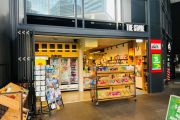
Port of Melbourne makes a splash with space
The Port of Melbourne, now owned by a QIC-led consortium, has launched a massive leasing campaign with 165,000 square metres of space available across eight facilities.
The properties range from 5500sq m to 68,600sq m and include office and warehouse space, hard-stand areas and wharves.
In a $9.7 billion deal two years ago, the Port of Melbourne was taken private by a consortium including QIC and its partners, the Future Fund, international firm Global Infrastructure Partners and Canada’s Borealis.
The ownership vehicle has been busy working over its financing in recent months, refinancing more than one-third of its debt in the United States’ private placement debt market.
Now it’s busy on the ground. Port of Melbourne chief executive Brendan Bourke said the port’s 50-year lease created certainty in planning and investment for prospective tenants.
“As private manager of the port, Port of Melbourne is aligned with the commercial interests of our tenants and customers to grow the port and deliver least-cost infrastructure to ensure a sustainable competitive supply chain,” he said.
“Port of Melbourne is committed to grow volumes with a focus on value creation through continued investment for future capacity.”
Key drawcard
The Port has appointed CBRE to broker the leasing deals for the eight properties.
“We expect to field interest from local, national and international companies, who can capitalise on the infrastructure, services and proximity of the port to significantly reduce business operating costs by locating at a significant point in the supply chain,” said CBRE’s Guy Naselli.
“The opportunity to secure long-term leases of up to 48 years will be a key drawcard. This tenure assists occupiers who require a degree of specialisation or a new building and provides the option to consider a purpose-built facility.”
Christine Miller, who is CBRE’s Pacific director for its supply chain advisory & transaction services business, said the port’s growth was also a drawcard, with total trade up 8.5 per cent for the 2017-18 financial year.
That is underpinned by population growth, which in turn drives construction activity especially in residential development along with firm employment.
As a result, those factors propel port activity and mean occupiers need access to efficient supply chains, Ms Miller said.
The port properties are on Coode Road, Enterprize Road and South Wharf, all within four kilometres of the CBD.
“Demand for warehousing and hard stand in the inner west is particularly strong and the supply of appropriately located and available properties has reduced considerably,” Mr Naselli said.
“This supply and demand differential is driving considerable change in Melbourne’s western industrial sector, with a separation emerging in rent and land prices for inner western suburbs such as Altona North and Brooklyn due to the proximity to the Port of Melbourne.”











